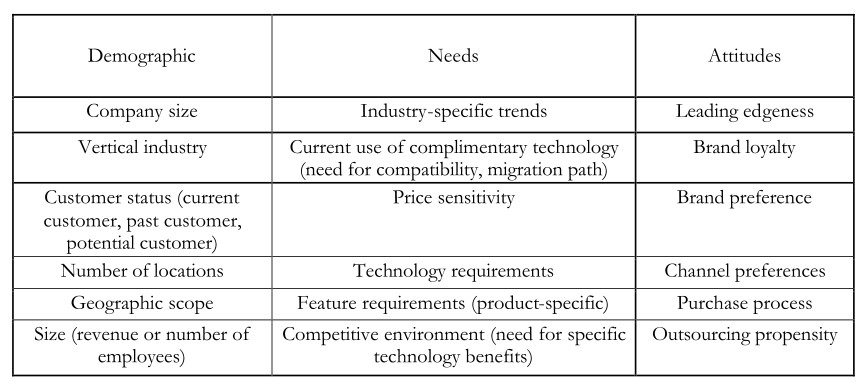In today’s economic environment, limited marketing budgets are the rule, not the exception. One way to maximize marketing ROI is to make sure you are targeting the right customers, with the right products and messages, at the right time. Since technology markets are not homogenous, market segmentation is an effective way to divide customers into groups based on similar needs, attitudes, or behaviors.
Let’s be practical – why waste precious marketing budget on advertising, selling, and even developing for customer groups that frankly are not likely to buy your products-if customer groups that are likely to do so exist?
Before you dismiss the concept, ask yourself the following question. When was the last time you re-visited your market segmentation assumptions? If you segment solely by vertical industry and company size, we’d hazard a guess and say that it has probably been at least three years-perhaps even more.
Market Segmentation
Methodology When discussing segmentation, the actual model can be thought of in terms of “buckets.” In other words, customers are divided into buckets by their common attributes-needs, purchase plans, brand loyalties, etc. Some attributes may end up being basis variables (the variables that assign a customer to a bucket) and others may end up being descriptive variables (they describe a bucket, but may not be so unique to each bucket to be the basis of segmentation). The following table identifies some of the variables Sage typically investigates when developing a segmentation model.


